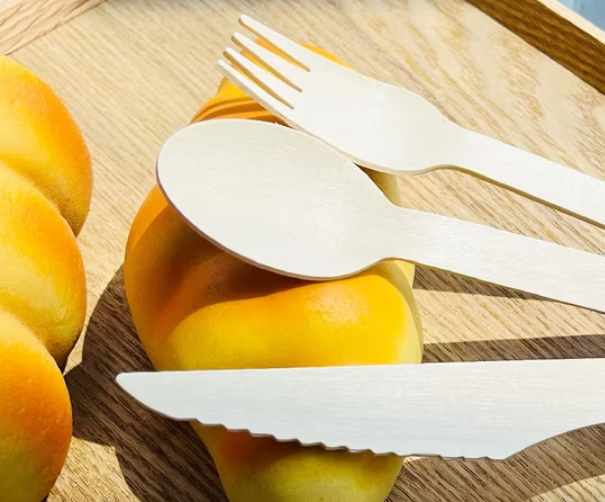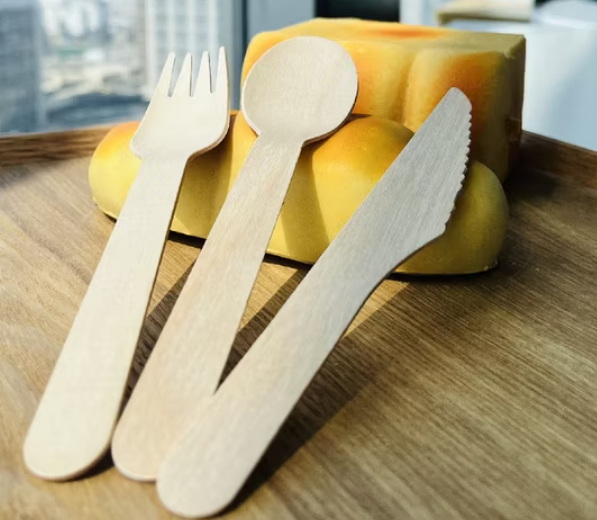
Content Menu
● Introduction to Wooden Cutlery
>> Environmental Benefits
● Practicality of Wooden Cutlery
>> Strength and Durability
>> Aesthetic Appeal
>> Cost Considerations
● Challenges and Limitations
● Innovations in Wooden Cutlery
>> Sustainable Forestry Practices
>> Recycled Wood Options
● Comparison with Other Alternatives
>> Bamboo Cutlery
>> Metal Cutlery
● Consumer Awareness and Demand
>> Impact on Consumer Behavior
● Conclusion
● FAQs
>> 1. Is Wooden Cutlery Compostable?
>> 2. Can Wooden Cutlery Be Washed and Reused?
>> 3. What Are the Environmental Benefits of Using Wooden Cutlery?
>> 4. How Does Wooden Cutlery Compare to Metal Cutlery in Terms of Durability?
>> 5. Are There Any Regulations Governing the Production of Wooden Cutlery?
In recent years, the world has seen a significant shift towards eco-friendly products, particularly in the realm of disposable cutlery. Traditional plastic cutlery, known for its contribution to plastic pollution, has been increasingly replaced by alternatives like wooden cutlery sets. But is a wooden cutlery set disposable truly eco-friendly and sustainable? This article delves into the pros and cons of using disposable wooden cutlery, exploring its environmental impact, production process, and practicality.

Introduction to Wooden Cutlery
Wooden cutlery, made from materials such as birch or bamboo, is marketed as a sustainable alternative to plastic. It is biodegradable and compostable, meaning it can break down naturally without leaving harmful residues in the environment. This characteristic aligns well with global efforts to reduce plastic waste and promote sustainability.
Environmental Benefits
1. Renewable Resources: Wooden cutlery is sourced from fast-growing trees, which are renewable and can be replenished naturally. This contrasts with plastic, which is derived from non-renewable fossil fuels.
2. Biodegradability and Compostability: Unlike plastic, which can take centuries to decompose, wooden cutlery breaks down quickly and can be composted, enriching the soil without polluting landfills or waterways.
3. Reduced Carbon Footprint: The production of wooden cutlery requires less energy and emits fewer greenhouse gases compared to plastic production.
Practicality of Wooden Cutlery
While wooden cutlery offers several environmental benefits, its practicality is also an important consideration.
Strength and Durability
- Strength: Wooden cutlery is generally sturdy and suitable for most meals, though it may struggle with tougher foods like well-done steak.
- Durability: It is designed for single use and cannot be washed or reused due to its absorbent nature, which can harbor bacteria.
Aesthetic Appeal
Wooden cutlery often features elegant designs, adding a touch of luxury to table settings. This aesthetic appeal makes it popular for events like weddings and corporate gatherings.
Cost Considerations
The cost of wooden cutlery is generally higher than plastic cutlery, which can be a barrier for widespread adoption. However, the environmental benefits and unique aesthetic may justify the additional expense for many consumers.
Challenges and Limitations
Despite its eco-friendly credentials, wooden cutlery faces several challenges:
1. Resource Demand: The high demand for disposable wooden cutlery requires a constant supply of virgin wood, which can lead to deforestation if not managed sustainably.
2. Regulatory Gaps: There is little regulation in the wooden cutlery industry, which can affect product quality and safety.
3. Absorbency: Wooden cutlery absorbs liquids and can harbor bacteria, making it unsuitable for washing and reuse.
4. Production Process: The manufacturing process for wooden cutlery involves several steps, including cutting, shaping, and finishing. This process can be energy-intensive and may involve chemicals for treatment.

Innovations in Wooden Cutlery
To address some of the challenges, innovations in the industry are focusing on sustainable forestry practices and more efficient production methods. Some companies are exploring the use of recycled wood or wood waste to reduce the demand on virgin forests.
Sustainable Forestry Practices
Sustainable forestry practices ensure that trees are harvested responsibly, allowing forests to regenerate naturally. This approach helps maintain biodiversity and prevents deforestation.
Recycled Wood Options
Using recycled wood or wood waste can significantly reduce the environmental impact of wooden cutlery production. This approach not only conserves natural resources but also reduces waste.
Comparison with Other Alternatives
In addition to wooden cutlery, other eco-friendly alternatives include bamboo cutlery and metal cutlery. Each has its own set of advantages and disadvantages.
Bamboo Cutlery
Bamboo is highly renewable and requires minimal water and pesticides to grow. Bamboo cutlery is lightweight, durable, and can be composted at the end of its life cycle.
Metal Cutlery
Metal cutlery, such as stainless steel or silverware, is durable and can be reused multiple times. However, it requires more energy to produce than wooden or bamboo cutlery and may not be as cost-effective for single-use applications.
Consumer Awareness and Demand
Consumer awareness and demand play a crucial role in driving the market towards more sustainable options. As consumers become more environmentally conscious, the demand for eco-friendly products like wooden cutlery increases.
Impact on Consumer Behavior
The shift towards eco-friendly cutlery influences consumer behavior by encouraging sustainable practices in daily life. This trend also prompts businesses to adopt greener packaging and utensil options.
Conclusion
A wooden cutlery set disposable is indeed more eco-friendly than traditional plastic cutlery due to its biodegradable and compostable nature. However, its sustainability is contingent upon responsible forestry practices and efficient production processes. While it offers a stylish and environmentally conscious alternative for events and daily use, its limitations in terms of durability and hygiene must be considered.

FAQs
1. Is Wooden Cutlery Compostable?
Yes, wooden cutlery is compostable and can be broken down in home or commercial composting facilities.
2. Can Wooden Cutlery Be Washed and Reused?
No, wooden cutlery is meant for single use only and should not be washed or reused due to its absorbent nature.
3. What Are the Environmental Benefits of Using Wooden Cutlery?
Wooden cutlery is made from renewable resources, is biodegradable, and reduces carbon emissions compared to plastic production.
4. How Does Wooden Cutlery Compare to Metal Cutlery in Terms of Durability?
Metal cutlery is generally more durable than wooden cutlery, especially for tougher meals, but wooden cutlery offers a sustainable alternative.
5. Are There Any Regulations Governing the Production of Wooden Cutlery?
There is currently little regulation in the wooden cutlery industry, which can impact product quality and safety.

















